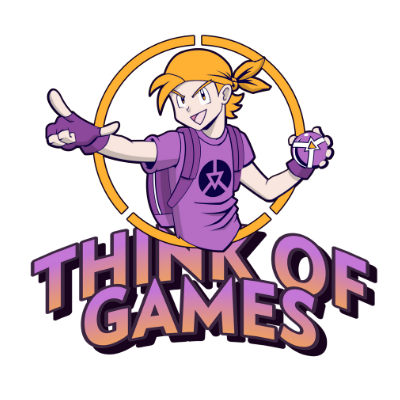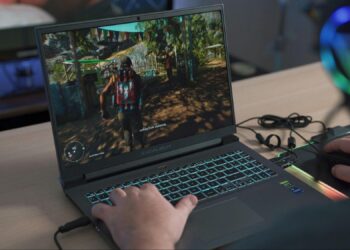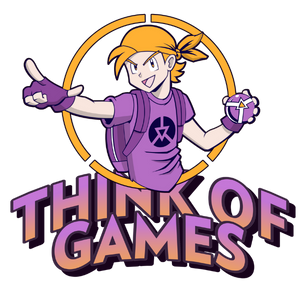The world of augmented reality (AR) and virtual reality (VR) gaming has grown a lot. Tools like Unity, ARCore, and ARKit help make games that mix the real world with digital things. By 2025, new ideas in AR and VR are changing how people play games. These technologies are no longer just for experiments; they are now common in many popular games.
A prominent AR game development company uses Unity as the main game engine for more than 60% of its AR and VR content. At the same time, Google’s ARCore and Apple’s ARKit have become very advanced. These developments create a great environment for exciting new immersive games.
Persistent Multiplayer AR Worlds
The biggest change in AR gaming is shared worlds, where many players can play together and see the same virtual objects tied to real places. Using Unity’s AR Foundation along with ARCore’s Cloud Anchors and ARKit’s collaborative features, people can share virtual content that stays the same even when different players join in.
Practical Implementation
Games like Pokémon GO use this tech to create shared gyms, raids, and social spots. Virtual creatures stay visible hours or days later, building evolving AR ecosystems.
Urban exploration games use persistent AR for treasure hunts, with clues and rewards placed as AR objects tied to GPS and landmarks. This makes cities into large game boards where digital and real-world exploration meet.
- Persistent AR creates shared gyms, raids, and social hubs.
- Virtual creatures stay discoverable for hours or days.
- Urban games use GPS and landmarks for treasure hunts.
- Cities become interactive game boards blending digital and physical worlds.
Technical Achievement
Unity’s networking, ARCore, and ARKit’s environmental understanding enable real-time sync of virtual objects across devices with different cameras, sensors, and orientations. They map physical spaces consistently, ensuring all players experience identical AR content placement regardless of device differences.
Advanced Environmental Understanding
Modern AR games demonstrate a sophisticated understanding of physical environments, with virtual objects realistically interacting with real-world surfaces, lighting, and obstacles.
Realistic Object Placement
ARCore’s Depth API and ARKit’s scene reconstruction enable Unity games to place virtual objects aligned with real-world objects, allowing characters to walk behind furniture, virtual pets to hide under tables, and AR effects to be blocked by walls, thereby enhancing realism and creating gameplay where characters hide or players take cover.
- Enables virtual objects to interact realistically with physical geometry.
- Supports immersive gameplay like hide-and-seek and taking cover behind real objects.
- Enhances AR experiences with proper occlusion and scene reconstruction.
Dynamic Lighting Integration
ARKit and ARCore’s lighting APIs help Unity games match virtual lighting with real-world conditions. This makes virtual objects and characters cast realistic shadows and reflect ambient light, creating a more natural look without the artificial or pasted-on appearance of earlier AR experiences.
Mixed Reality Hand Tracking and Gesture Control
Eliminating physical controllers via advanced hand tracking marks a major leap in natural AR/VR interaction. Unity’s XR Interaction Toolkit, combined with ARKit’s hand tracking and ARCore’s gesture recognition, allows intuitive, controller-free gameplay.
Natural Interaction Paradigms
Players use gestures to manipulate virtual objects: pinching to grab, rotating to spin, and throwing to launch. VR rhythm games detect finger movements for instruments. AR puzzles respond to hand poses for spell casting or tool selection.
This natural interaction dramatically reduces the learning curve, as players interact with virtual content based on real-world intuitions instead of memorizing button combinations on unfamiliar controllers.
Accessibility Improvements
Hand tracking democratizes VR gaming by removing the cost and intimidation of specialized controllers. Players with limited mobility can engage using their comfortable hand movements, with games adapting interactions to individual capabilities.
Photorealistic Avatar Systems
Unity’s Digital Human tech with ARKit’s face tracking and ARCore’s facial landmark detection enables photorealistic avatars that mirror real facial expressions and emotions in real-time.
Expressive Social VR
Multiplayer VR games now showcase avatars with subtle emotional cues like eyebrow movements, mouth shapes, and eye direction, making social VR more genuine through facial expressions. AR filters have advanced from simple overlays to tools for creating personalized avatars that track and replicate facial movements, used across various games and social platforms.
- VR avatars now show subtle emotional cues like eyebrow movement, mouth shapes, and eye direction.
- This adds genuine emotion to social VR interactions.
- AR filters have become advanced character creation tools.
- Players can design personalized avatars that mimic their facial movements and use them across platforms.
Performance Capture for Indies
Unity’s accessible mocap tools integrated with smartphone cameras democratize performance capture. Independent developers provide game development services such as creating character animations with professional quality by recording actor performances using ARKit-enabled iPhones.
AI-Powered Adaptive Gameplay
Artificial intelligence integration enables AR and VR games that intelligently adapt to physical environments and player behaviors, creating unique experiences tailored to individual contexts.
Environment-Aware Game Design
Unity games analyze room layouts detected by ARCore or ARKit to generate levels suited to physical space. AR tower defense games spawn enemies from doorways and windows, using real architecture. VR escape rooms adjust puzzle difficulty and room layout based on the available play area.
Behavioral Learning
AI systems analyze player movement, skill, and interaction styles to adjust difficulty and pacing. VR fitness games monitor exertion to maintain exercise intensity, while AR educational games adapt teaching based on learning pace.
Cross-Reality Experiences
Innovations in 2025 increasingly blur distinctions between AR, VR, and traditional gaming through seamless transitions and integrated experiences.
Hybrid Gameplay Modes
Games provide both AR and VR modes for the same content, letting players select their preferred level of immersion.

Puzzle games can be played as AR experiences on phones or as full VR experiences on headsets, with progress saved across both modes.
Asymmetric Multiplayer
Innovative titles allow AR phone users to work together with VR headset players within shared game worlds. One player navigates dungeons in VR, while another offers strategic guidance via AR map interfaces, fostering distinctive cooperative experiences that cannot be achieved in traditional gaming.
Future Trajectory
As we progress through 2025, several emerging technologies promise even more significant innovations.
- Neural Interfaces: Early brain-computer interface integration will enable thought-controlled VR interactions, beginning with simple commands and emotion detection.
- Holographic AR: Advances toward true holographic displays will eliminate the screen mediation currently required for AR experiences.
- Haptic Advancement: Sophisticated haptic gloves and suits will provide tactile feedback matching visual and audio stimulation for complete sensory immersion.
Conclusion
In 2025, Unity, ARCore, and ARKit came together to create a new era of AR and VR gaming. Games now have features like multiplayer worlds that persist, realistic avatars, natural hand controls, and AI-powered experiences. These advancements show that immersive gaming has become a strong and unique platform.
These innovations show AR and VR gaming go beyond traditional gaming; it’s about new ways of playing using space, natural interaction, and immersion that flat-screen games can’t replicate. As technology advances and tools become more accessible, 2025’s innovations are just the start of AR and VR’s mainstream rise.



















